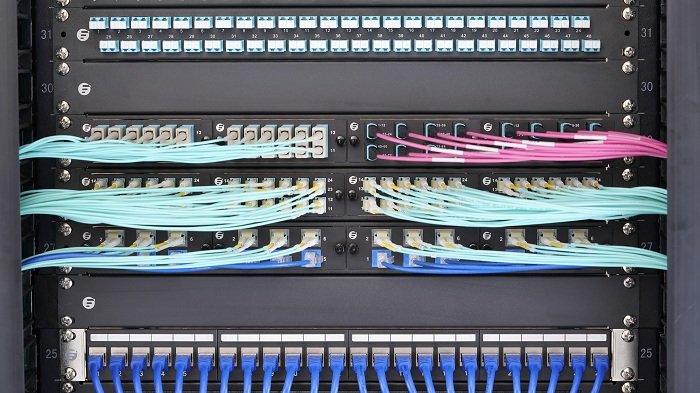Blog
Guide – Organizing Server Rack
When mounting all of the equipment (such as servers, storage, switches, and routers) into the server rack, cable management tends to have been overlooked in many times. Without a good rack cable management solution, all of the network cables in the rack look like spaghetti. In this case, cable management becomes a tremendous challenge for IT technicians and network installers in most data centers. How to organize a server rack? In fact, some simple plans and a right arsenal of tools are prepared before installing the server rack, such messy situations will be avoided.
Why Need Do Cable Management on a Server Rack?
The reason is simple enough: poorly routed cables can lead to an assortment of problems over time. First, everything unorganized and jumbled just creates a high risk for cables to be tangled up, and a possibility of making a mistake when reconnecting cables. Second, rack cable management is directly related to hardware safety. All equipment running on the rack is going to generate heat, so organizing a rack with a conception involving space will help promote the airflow and hardware management. Last but not least, cable labels should not be neglected, which help save lots of time on troubleshooting. For more information about cable labeling, please refer to Proper Cable Labeling Guidelines. Just imagine how difficult it would be trying to trace a cable through that mess? Therefore, a large emphasis should be placed on organization and cleanliness when creating the server rack setup. The following video gives a quick look at the structured cabling solutions of fiber or copper system in a single rack.
What Factors Should You Consider Before Organizing Server Rack Cable Management?
Rack Specification
The vast majority of IT applications use 19-inch wide racks. The depth of the rack is usually adjustable to some degree. The height of the rack is divided into standardized segments called rack units (“U”), and each rack unit (1U) is 1.75 inches high. For example, a 42U rack contains 42 rack units. It does mean that the rack will accommodate any combination of standard rack equipment up to 42U. Therefore, the first step is to choose a suitable server rack for your data center. Learn more about choosing a suitable server rack, please refer to Different Types of Server Rack Used in Data Center.
Server Rack Layout
Plan the layout of your server rack before mounting all of the equipment is of critical importance in today’s high-density rack environments. You need to determine what components to be housed in the rack and map out the blueprint that corresponds to where you are planning to mount each component on the rack. This step can prevent the frustration of having to move equipment after it has been mounted.
Equipment Location
The location of equipment in the rack is vital to maximize the space inside the rack and to permit easy service. You should develop a detailed plan for equipment placement before you install it, including plans for future expansion. Generally, the heaviest equipment is placed in the bottom of the rack, such as UPS systems and external battery packs, larger servers.
Cabling Distribution
The patch panel is always used for rack cabling distribution, which potentially allows for the use of larger switches and higher utilization of ports. An alternative approach is to install network switches in the rack and use the switch layer itself as the patching system, but the patching function is limited. In terms of cabling, the patch panel is nothing but essential cable management tool to wire cables together. The 24-port patch panel is the most common options used on the rack. It is a perfect combination between the patch panel and cable management bar to reduce cable tension in the rack. For high-density cabling system, other cable management tools, including horizontal and vertical cable manager, cable tie, cable label, are also considered.
Cooling
As the density of equipment in the rack increases, cooling becomes an important factor. The heat concentrations can lead to increased power consumption and higher rates of equipment failure. Besides, unmanaged cabling could block airflow and prevent efficient cold air distribution. In this sense, using horizontal and vertical cable managers to organize patch cables and power cords is also very helpful for cooling efficiency.
What Rack Accessories Are Needed to Organize Your Server Rack?
Patch Panel
Patch panels provide space-saving, high-density cable connections. Using patch panels as part of a structured cabling system lowers maintenance costs and reduces installation and configuration errors. Fiber patch panel and copper patch panel are used in patching fiber and copper cables respectively.

